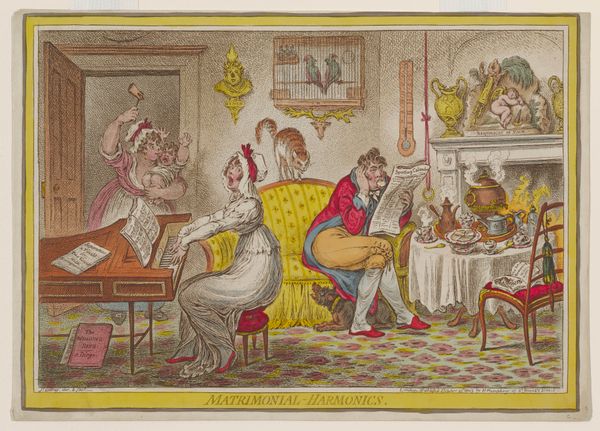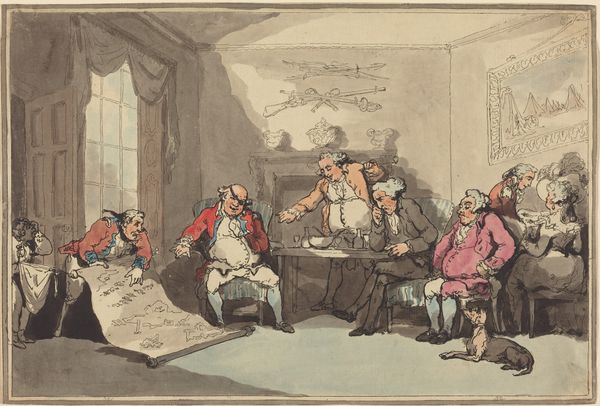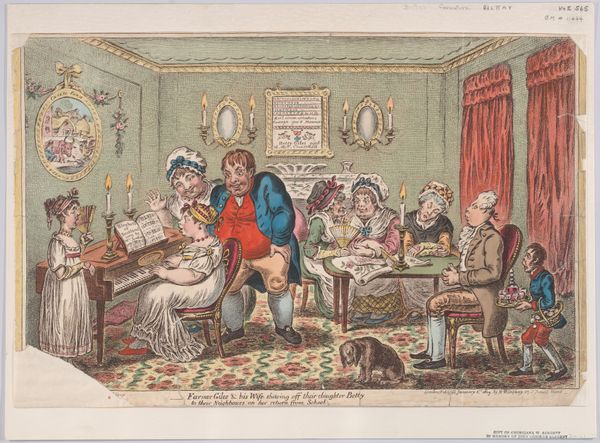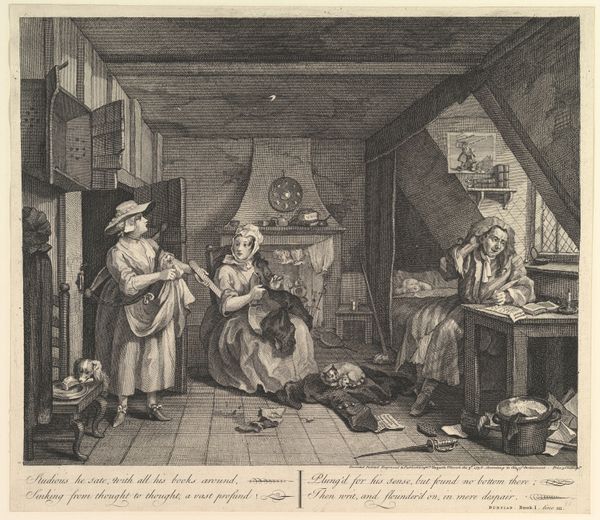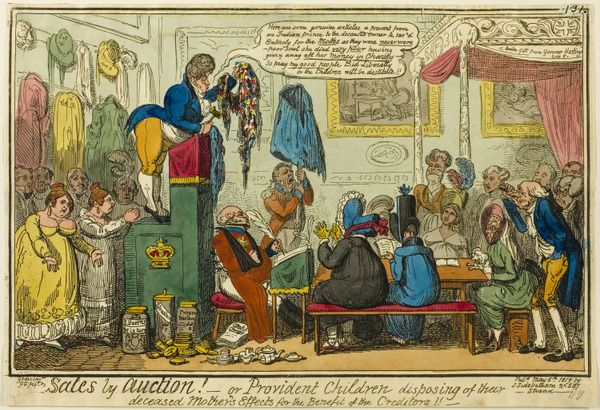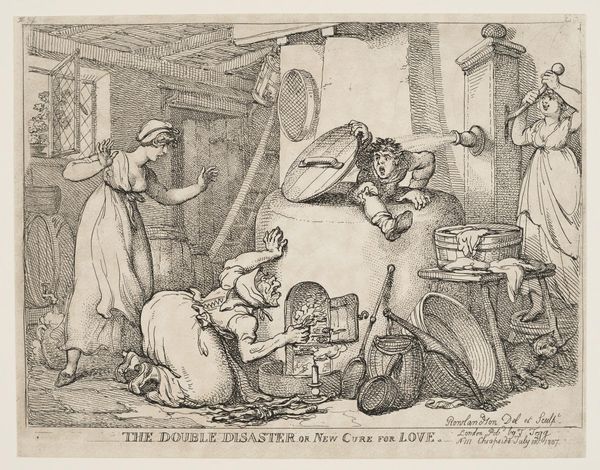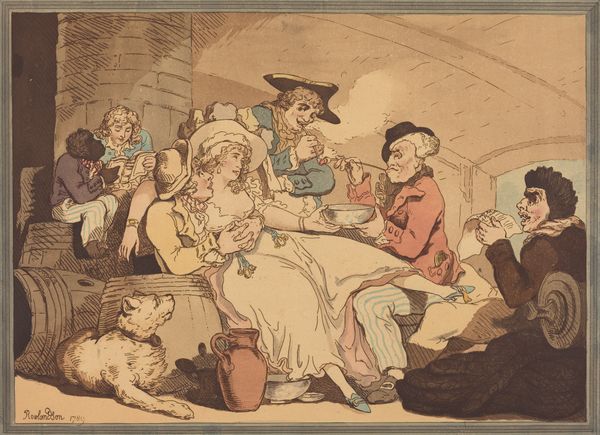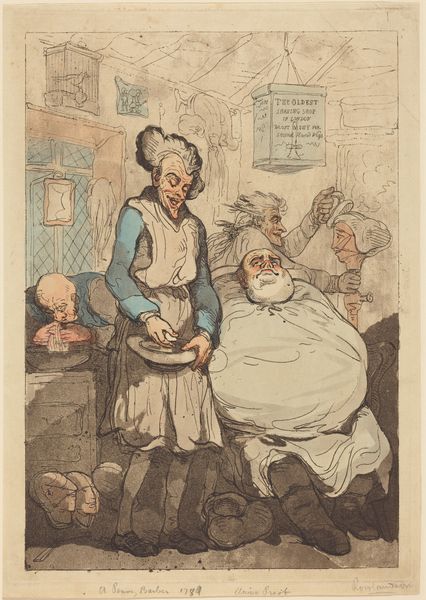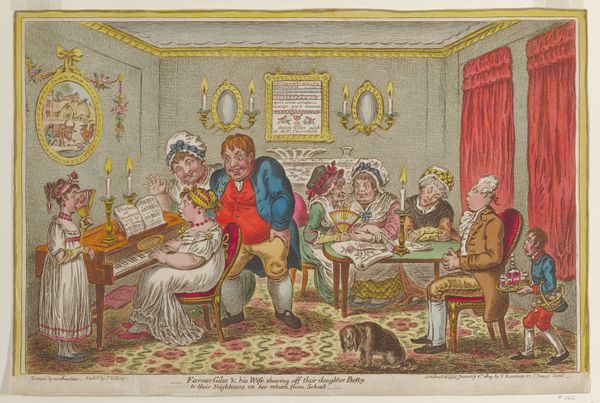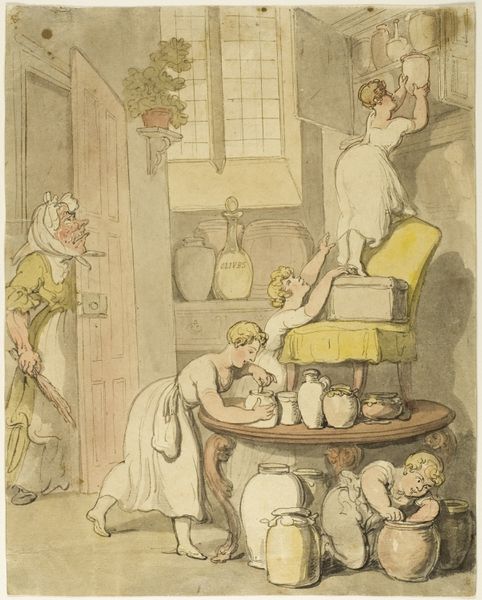
Hocus Pocus, or Searching for the Philosopher's Stone Possibly 1800
0:00
0:00
#
narrative-art
# print
#
caricature
#
caricature
#
romanticism
#
line
#
genre-painting
Copyright: National Gallery of Art: CC0 1.0
Curator: This is "Hocus Pocus, or Searching for the Philosopher's Stone," a print possibly from 1800 by Thomas Rowlandson. Editor: Thanks. At first glance, it's quite chaotic! So many bizarre details crammed into one scene. The light source is fascinating though, all emanating from the furnace, setting a mood of mystery and intense, almost crazed activity. What do you make of the piece? Curator: Observe the composition closely. Rowlandson employs a dynamic, almost feverish line. Note how the eye is guided by these lines, from the alchemist laboring at the furnace to the illicit embrace in the background. It's a carefully orchestrated visual experience, wouldn't you agree? How does this linear structure reinforce the central theme, do you think? Editor: I suppose the frenetic lines do create a sense of urgency, fitting the pursuit of the Philosopher's Stone. But how much does this inherent visual energy matter when considered within the art of its period? Curator: Indeed. The exuberance we see expressed through the work's many forms are crucial, as Rowlandson’s emphasis isn't merely illustrative; it’s about the raw impact of the image itself. Note the artist's command over line and the interplay of light and shadow. It’s a testament to the artist's craft, even amidst the satirical subject matter. What more can be determined about the themes Rowlandson pursued based on these basic technical traits? Editor: I can now recognize a careful artistic architecture when I didn't see it before! Seeing those relationships of light and line provides the key.
Comments
No comments
Be the first to comment and join the conversation on the ultimate creative platform.
